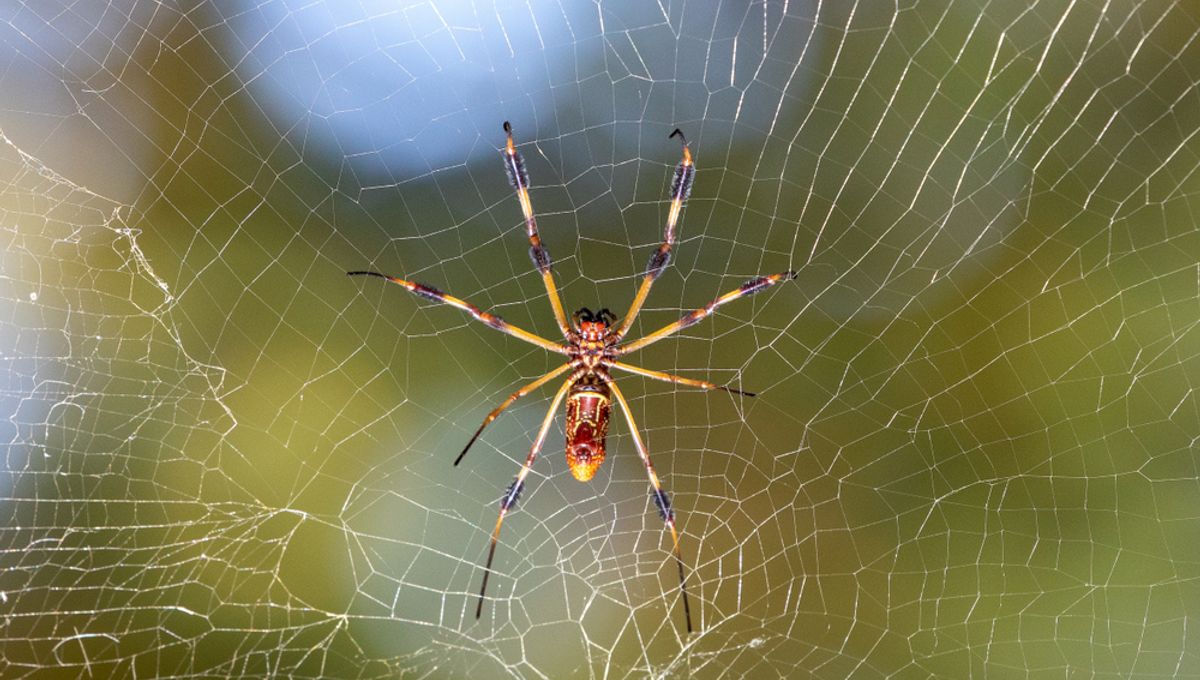
Meet the Rumplestiltskin of the animal kingdom: the Trichonephila clavipes, otherwise known as the golden silk orb-weaver.
This striking arachnid might not spin threads of pure gold, but the critter is able to skillfully craft large golden-hued webs that can reach impressive lengths up to three feet long. The pigment responsible for the silk’s bright yellow color is xanthurenic acid. It is thought that the unusual color offers ecological benefits, such as attracting prey or camouflage.
Golden silk orb-weavers can be found in North Carolina, Florida, and other southeastern states as well as the West Indies and parts of Central and South America, where they tend to be found in wooded areas attached to trees and bushes. The species can be identified by its distinctive coloring (brown and yellow) and the hair-like tufts found on its legs.
Like many insects, the gold silk orbweaver displays sexual size dimorphism, which in this case means female spiders dramatically outsize their male counterparts. While a male spider is a relatively puny 6 millimeters, a typical female spider is usually between 24 and 40 millimeters long – but can grow to three inches, according to the National Park Service.
The two sexes also display different behavior, with the males taking on a more nomadic lifestyle in the lifelong quest for willing females, who are more preoccupied with protecting their eggs. The impressive webs it casts are primarily the work of female spiders. Male spiders, in contrast, stop producing webs upon sexual maturation, instead using draglines to move from place to place. The silk used to create these webs are just one of seven different types built for different ecological purposes, from imprisoning prey to encasing eggs. The material is so strong, the silk of a related spider (Trichonephila maculata) is used by fishermen in the South Pacific to use as nets.
While T. clavipes might not look particularly friendly, they are relatively harmless. According to the University of Florida’s Institute of Food and Agricultural Services, the bite of a golden silk orb-weaver might cause some localized pain and a little redness, but it is less severe than a bee sting.
The golden silk orb-weaver is not the only arachnid with an unusual skill. Meet the diving bell spider, an underwater species that breathes with specially built bubble pods, or the strange-looking “assassin spider” that feasts on other spiders.
Source Link: Trichonephila Clavipes: The Spider That Spins "Golden" Silk